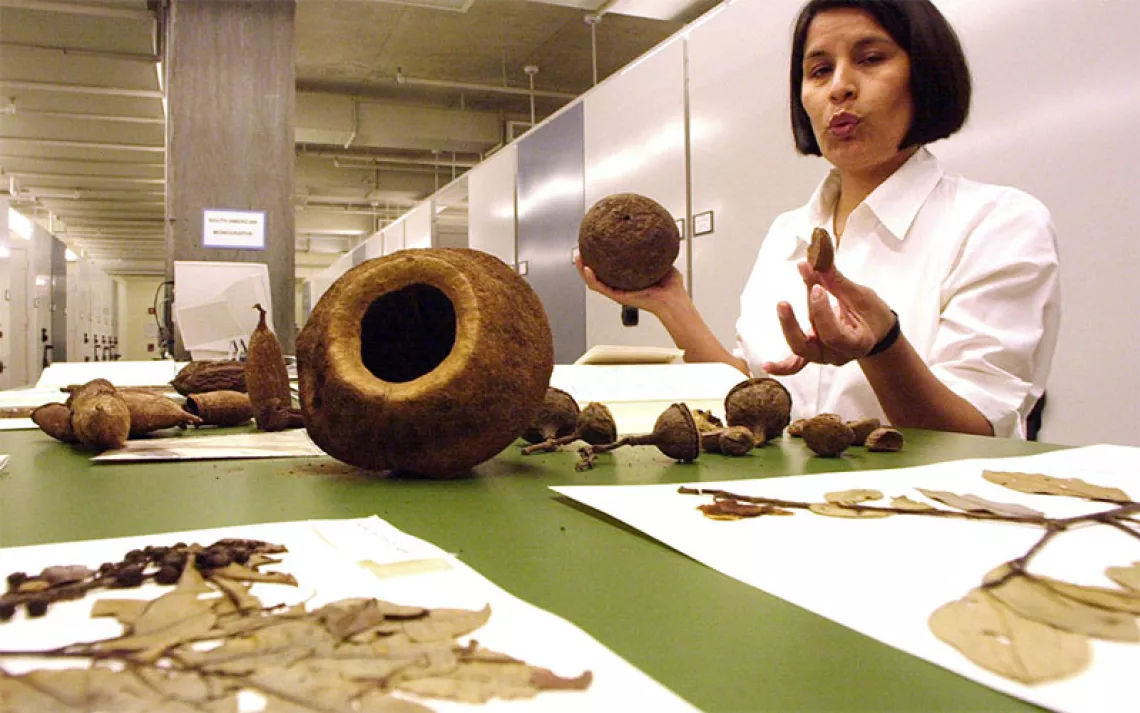Quality, Not Just Quantity, Matters When It Comes to Conservation
Study suggests focusing biodiversity hotspots is better than creating megapreserves

Photo courtesy of Luis Mazariegos
The Half Earth Project is one of the most exciting movements in conservation. The idea is simple: Set aside 50 percent of all the land outside Antarctica and half of the oceans to protect Earth’s biodiversity. Still, such a global project creates a variety of complex, and monumental, political, financial, and scientific problems. Could such a project meet its goal of protecting 85 percent of species on Earth? A new study in the journal Science Advances suggests that it’s not the acreage that matters when it comes to species conservation. It’s all about location.
Currently, depending on how the number is calculated, 15 to 17 percent of land has some sort of legal protection, meaning that to reach the half-earth goal of 50 percent, nations need to add large swathes of territory. The easiest way to do that is to declare uninhabited, resource-poor areas like deserts and tundra as natural areas. But lead author Stuart Pimm of the Nicholas School of the Environment at Duke University and president of the conservation group Saving Species says this approach won’t meet the biodiversity targets. “If you look at the places we’ve protected in the past, they are remote, arid, cold uninhabited places,” he says. “They are wonderful and important. But those places don’t have a lot of species. To protect Earth’s biodiversity, bigger and better is not going to work. We have to be smart about the areas we protect.”
To understand how well conservation areas protect species and what areas lack protection, the international team used geospatial analysis to see where protected areas overlap with the ranges of 20,000 species of birds, mammals, and amphibians. What they found is that current protected areas do a decent job of giving refuge to animals. Half the birds in the world with the smallest geographic range, for instance, have at least some protected land within their home territory, the study found. However, some very important biodiversity hotspots are not well protected at all, including the northern Andes, coastal forests in Brazil, and the mountains of southwest China.
According to the paper, adding the largest remaining unprotected wilderness areas, such as large swathes of boreal forest in Canada and Russia, Arctic regions, and intact tropical forest to the list of conservation areas will not add many species to those currently protected. Instead, the study suggests that governments and conservationists should focus on those unprotected hotspots and the one-third of Earth’s surface that hosts 85 percent of known mammal, bird, amphibian, and reptile species.
“If we are to protect most species from extinction, we have to protect the right places—special places—not just more area, per se,” coauthor Binbin Li at Duke Kunshan University in China said in a statement.
Pimm suggests that instead of focusing solely on vast wilderness areas, the conservation community should support smaller areas that do a lot of the heavy lifting for species conservation. “If you look around, there are small, almost boutique conservation areas protecting species,” Pimm says. “What we found is that it’s small groups and often local groups of people that most of us haven’t heard of that are doing the really important job of protecting species from extinction. I’m always enormously encouraged by these people who work with tiny budgets but are passionate about the places they live. I want to make sure we empower them and find resources.”
In the United States, for instance, he thinks securing biodiversity means shifting focus and resources to the southeast. While the wealthy northeast is full of private land trusts and conservation efforts, the American South, which is home to large numbers of endemic fish, amphibians, and reptiles needs the same type of energy and resources. Similar disparities between wealthier and poorer areas are found in nations across the world and need to be rectified.
The researchers acknowledge that there are some benefits of massive land conservation that they are not taking into account. Their work does not include climate change remediation, ecosystem services, and other benefits. There is just not enough information on insects, arachnids, and many species of plants and microbes to say whether a half-earth-like project would protect the majority of their biodiversity. But Pimm says he hopes scientists and citizen scientists will use digital tools over the next few decades to help improve our understanding of biodiversity and build a better roadmap for what really deserves protection.
The Half Earth Project, it turns out, is more or less in agreement with the new study. While reaching 50 percent protection is the broad goal for the movement, the big question they are now wrestling with is which half? To that end they are putting together the Map of Life dataset to understand just what tiny blocks of land are most species-diverse—the first step in figuring out what areas should be prioritized for protection.
“Knowing where species live and the pressures threatening them is paramount in reversing the extinction crisis and maintaining the health of our planet, for ourselves and for future generations,” scientists on the project wrote on Medium earlier this summer. “As the impact of humans increasingly encroaches on critical habitats everywhere, determining where to protect is just as critical as how much to protect.”
Hopefully the thoughts in this latest study and the half-earth idea can coexist. “It’s clear that we need to preserve big chunks of Earth. Should we be protecting the boreal forest and the Amazon? Yes. Should we save large areas in Patagonia? Yes,” says Pimm, who serves as science adviser to projects doing just that. “What I worry about is that in asking for half the earth we will miss the details. The details matter, and this study is an effort to focus the debate on getting the details right.”
 The Magazine of The Sierra Club
The Magazine of The Sierra Club



